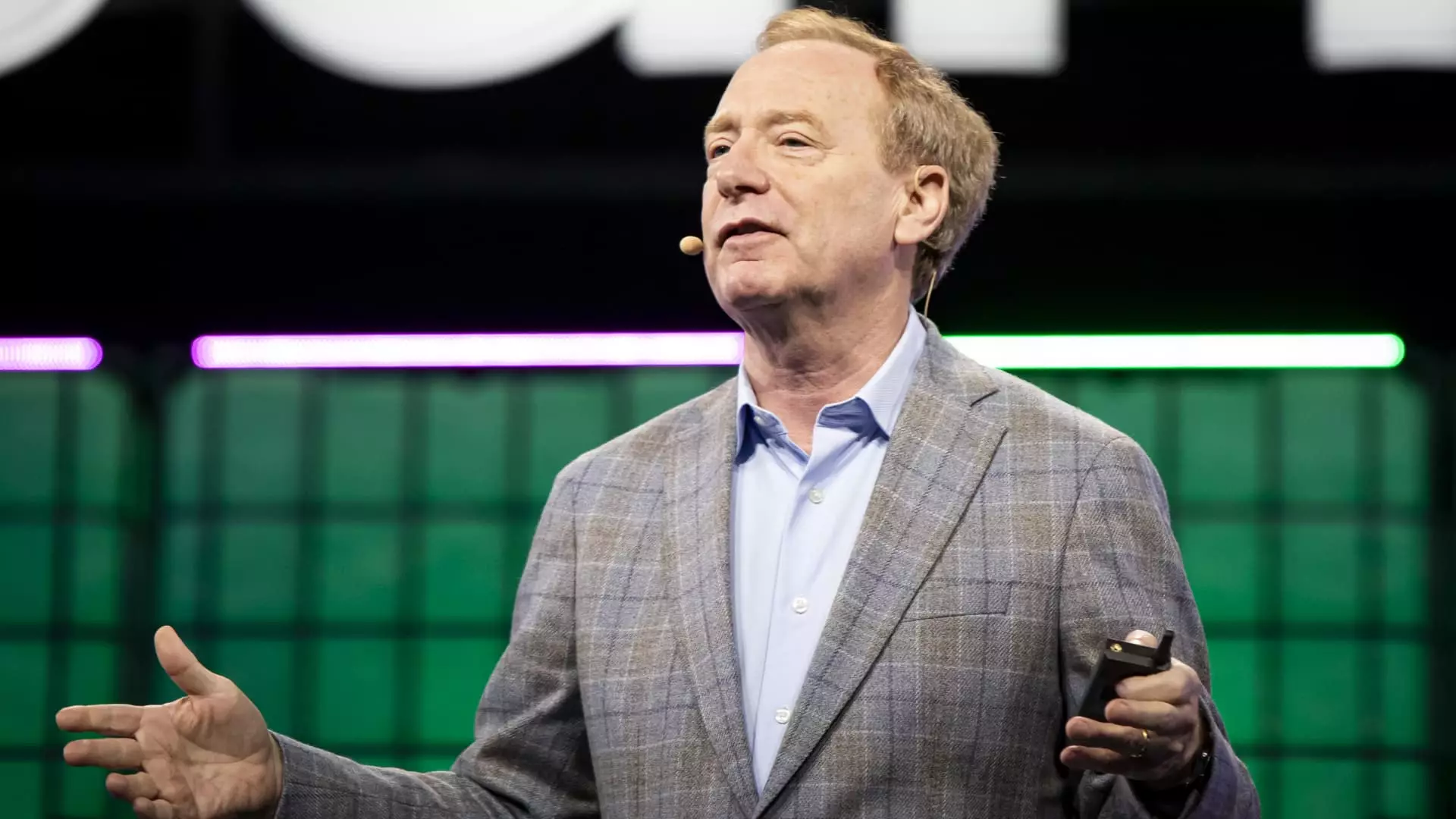Microsoft is making a bold statement in the tech world by allocating a staggering $80 billion toward the construction of advanced data centers tailored to support artificial intelligence (AI) workloads in fiscal 2025. This initiative was announced by Brad Smith, the company’s Vice Chair and President, and represents a substantial investment aimed at solidifying Microsoft’s stance in the increasingly competitive AI landscape. A notable aspect of this investment is that more than half of it is earmarked for development within the United States, signaling a strong commitment to domestic technological advancement.
The conversation surrounding AI is one of urgency and transformation, and Microsoft recognizes that to maintain its leadership position, it must bolster its infrastructure rapidly. Smith’s commentary highlights the multifaceted nature of the current AI race, emphasizing that the need for innovation is not just a goal but a necessity for survival in the tech sector. The race is fueled by collaboration with ground-breaking entities like OpenAI, along with other rising firms that are pushing the boundaries of AI technology.
The AI Race: A Surge of Competition
The rapid proliferation of AI technologies such as OpenAI’s ChatGPT has sparked a sense of urgency among leading tech firms to invest in AI capabilities and hardware. Major players are vying for resources like Nvidia graphics processing units (GPUs), which are crucial for AI model training and deployment. This trend underscores a universal race toward not only creating but also perfecting generative AI technologies. Microsoft’s strategic investments are part of a larger trend aiming not only to enhance its own product offerings but also to set industry standards.
Microsoft’s prior investments illustrate a long-standing partnership with OpenAI, amounting to over $13 billion, which allows the tech giant to leverage cutting-edge AI models across various platforms, including Windows and Microsoft Teams. The integration of AI into these widely-used applications represents a substantial advantage that could reinforce Microsoft’s market position while offering readily available AI tools to a broad user base.
In the first quarter of fiscal 2025, Microsoft reported significant financial activity, with capital expenditures reaching $20 billion globally. A substantial portion—$14.9 billion—was invested in property and equipment, with expectations for continued growth in subsequent quarters. This upward trajectory is indicative of Microsoft’s robust commitment to expanding its cloud services, where revenue from its Azure platform grew by an impressive 33% year over year, with a considerable contribution from AI services.
Moreover, the strategic call to action made by Smith highlights the geopolitical dimensions inherent in the quest for supremacy in AI. The increasing competition from countries like China, which is actively seeking to establish its own AI frameworks and data center capabilities in developing nations, implies that the U.S. needs more than investment; it requires a comprehensive strategy that incorporates educational initiatives and international collaboration.
The implications of Microsoft’s ambitious strategies extend far beyond mere infrastructure investment. They point to a definitive need for leadership in fostering both innovation and competitive diversity in AI technologies. Smith’s urging for proactive measures to bolster the U.S.’s standing in the AI domain signals an understanding that the race is not only about technology but also about global influence.
Microsoft’s $80 billion investment in AI infrastructure represents a multi-faceted approach to reinforcing its leadership position amid intense global competition. As the tech industry evolves, the importance of strategic investments combined with international collaboration and educational endeavors will be crucial for sustaining growth and securing the United States’ role as a leader in AI development.

